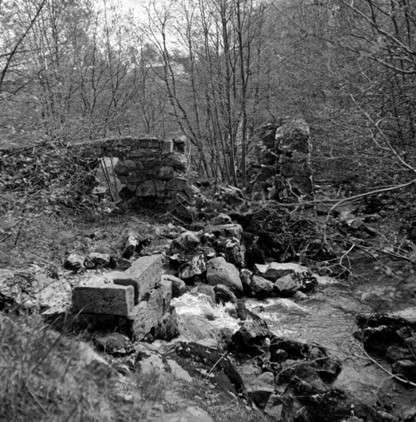Forgotten mill ruins to be restored in Bemböle

In the early 18th century, two watermills were located at the River Glomsinjoki rapids in Bemböle, Espoo, just near the current Ring III. Their ruins have been long forgotten, but now they will be reconstructed. The channel will also be restored closer to its natural state.
The long history of the mills
Cereals from Bemböle, Karvasbacka, Gloms and Lövkulla were ground at the River Glomsinjoki rapids already at the end of the 16th century. A parish map from 1750 shows two watermills used during the spring and autumn floods. The old mills had already deteriorated at that time. They were replaced by a new vertical-axle mill, which was later replaced with a water wheel mill. In addition to the mill building, the watermill included a dam and a mill pond formed behind the dam.
There used to be an upper and a lower mill in the rapids. They stopped operating in 1929, when the wooden parts of the mill burned down in a fire. The remaining parts of the wooden and stone mills in the original rapids environment include the ruins of the grey granite mill building, some dam and mill structures, downstream riverbed support structures and the mill pond behind the upper mill.
Nature and conservation values will be taken into consideration when restoring the ruins and the channel
The Bemböle lower mill in River Glomsinjoki will be reconstructed, and the old ski track bridge will be dismantled. Flowing water restoration will also be carried out over approximately 60 metres.
The Bemböle mill ruins are protected by the Antiquities Act, and they have been deemed to be of national value. The Act prohibits the digging, covering, altering, damaging, removing and any other tampering of an archaeological site.
The mill ruins are also a protected area of a species of special concern due to the Bembidion monticola beetle indigenous to the area. The River Glomsinjoki stream valley is the only known habitat of Bembidion monticola in Finland. Nature and conservation values will be taken into consideration in the restoration process. The restoration plans have been prepared according to the instructions provided by the experts of the ELY Centre and Finnish Environment Institute’s Coleoptera working group.
Based on a call for tenders, the Public Works Department has selected IKJ Rakennus Oy to implement the restoration project. The price of the contract is approximately EUR 130,000. Six operators submitted a tender. Work at the contract site will start at the earliest on 1 July 2025 and be completed within around two months.